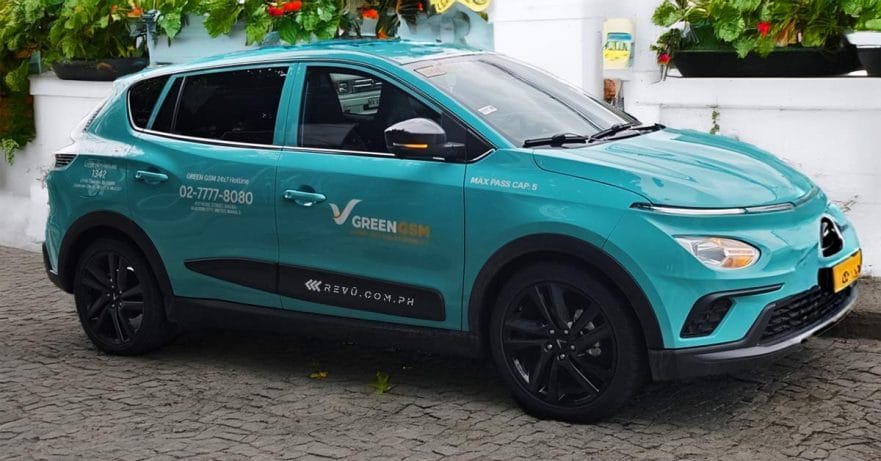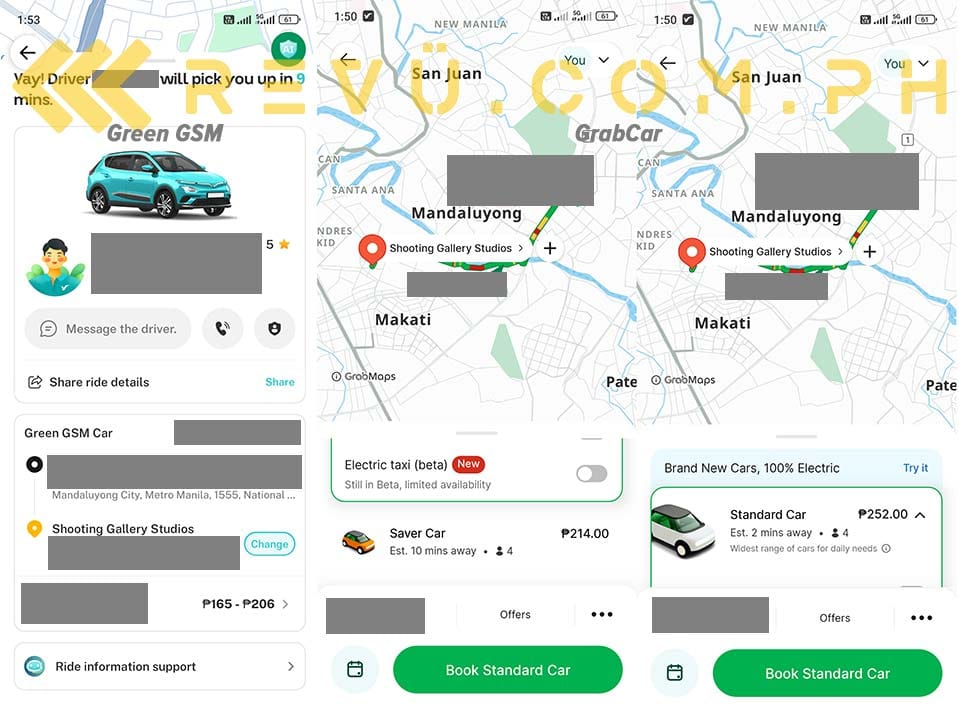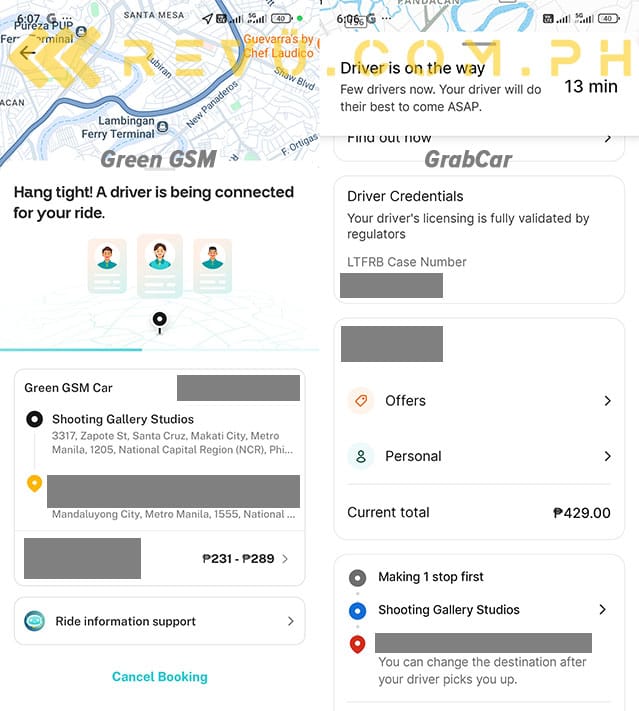You might have already caught wind of it on your feeds or the news: A new all-electric taxi fleet has rolled into town.
Green GSM, or Green and Smart Mobility, is now officially zipping around the Philippines, backed by a hefty $1 billion investment from its Vietnam-based parent company, with an initial $500 million already deployed for its initial phase. This isn’t just a win for commuters — it could be a massive win for the local job market. The Office of Special Assistant to the President for Investment and Economic Affairs projects that this massive influx of capital could eventually create up to 70,000 jobs nationwide.
Of course, we were interested. So when the opportunity arose to try Green GSM on a recent trip to a press briefing, we jumped at it. But before we dive into our experience, here’s what you need to know about the new kid on the block (or garage?).
What exactly is Green GSM?
Green GSM is the Philippines’ newest taxi provider, distinguishing itself with an exclusively EV fleet. Its vehicle of choice? None other than those manufactured by VinFast, the multinational automotive arm of Vietnamese billionaire Pham Nhat Vuong’s Vingroup, Vietnam’s largest private conglomerate. And, yes, Green GSM is very much a part of that expansive Vingroup ecosystem.
In the Philippines, specifically Metro Manila, Green GSM’s fleet is comprised entirely of the VinFast Nerio Green fully electric vehicles. The Nerio Green is a custom subcompact-crossover model, a rebadged VinFast VF e34 tailored for the local market, and you won’t find it in VinFast dealerships here. It’s purpose-built for Green GSM’s operations.
Our ride was one of these, and we can confidently say it comfortably seats up to five individuals, including the driver. Being a full EV, the cabin offers a good amount of space, with generous legroom for rear passengers. As almost-daily GrabCar users, we’re well-acquainted with the confines of subcompact sedans and hatchbacks like the Toyota Vios and Mitsubishi Mirage. The VinFast Nerio Green, by comparison, felt noticeably roomier and delivered a palpably smoother ride.
Cargo space in the rear is also generous, making it easy for families to haul strollers and luggage — provided, of course, that your driver actually clears out their own belongings at the back. Given the choice, we’re confidently picking the Green GSM electric car over virtually any other four-wheel option TNVS operators currently have on offer.
According to various reports, and corroborated by a Green GSM driver we spoke with (more on that later), approximately 500 Green GSM units are currently operational nationwide.
How to hail your electric ride
Booking a Green GSM taxi offers a trio of options:
- The classic flag-down: You can still opt for the old-school method of flagging down a taxi on the street. This is arguably the easiest if you happen to spot an unbooked unit heading your way. However, take note that the Green GSM cars we’ve encountered so far tend to have heavily tinted windows and lack illuminated signage or front windshield indicators to signal their availability. We shared this observation with our driver, who mentioned previous passengers echoed the same sentiment. Perhaps Green GSM could consider this feedback to make flagging down a taxi easier in the future.
- The hotline hero: If you need a ride fast and can’t find one via the app or on the street, call Green GSM’s hotline at +632 7777 8080 to book by phone.
- The app advantage: The most familiar method for many will be through the Green GSM app, available for free on both the Google Play Store and Apple’s App Store. Setting up an account is a breeze, allowing you to customize your Home and Work locations in mere minutes. Booking a ride through the app — and even signing up — earns you points redeemable for future trips.
The initial payment options are already flexible, supporting cash and QRPh, which is the Philippines’ standardized QR payment system, compatible with GCash and Maya. You can also link your debit or credit card directly within the app, bypassing the need for QR codes or cash payments during your journeys.
Booking via the app provides an estimated fare. And this is crucial: Green GSM remains a taxi service and, as such, must adhere to local regulations. Therefore, the price displayed in the app is only an estimate. The final fare can fluctuate — either lower or even higher — depending on traffic conditions and other related variables.
Our experience highlighted this point: We ended up paying more than the app’s initial estimate due to heavy traffic at our destination. The app quoted between P165 (around $2.9) and P206 ($4.7), but our final bill came in at P230 ($4). Which leads us to the inevitable question…
Is Green GSM actually cheaper Than GrabCar?
The answer, as with many things in life, is a bit complicated — yes and no. Compared to a standard four-seater GrabCar, Green GSM likely offers a more economical ride. However, stack it against a GrabCar Saver booking, and Green GSM could potentially cost you more, particularly in heavy traffic. Our test trip confirmed this: Our P230 ($4) Green GSM fare was higher than the P214 ($3.8) GrabCar Saver rate at the time we checked.
Peak hours, however, tell a different story. GrabCar rates typically surge when demand is high and traffic grinds to a halt. Returning from that press briefing, we attempted another Green GSM booking. The estimated fare from Makati to Mandaluyong hovered between P231 ($4) and P289 ($5.1). At the same time, a standard GrabCar booking was a steep P429 ($7.6).
The road ahead… and its bumps
So which service did we end up using for our return trip? We settled for Grab, simply because despite waiting for nearly 30 minutes, we couldn’t secure a Green GSM ride. And therein lies the service’s most significant hurdle right now — a scarcity of available cars, especially during peak hours.
Our driver shed some light on the situation, confirming that Green GSM is actively recruiting more drivers to meet demand. That’s definitely a positive sign that should directly address the current fleet limitations.
He also revealed that drivers are direct employees of Green GSM, earning a fixed salary plus commissions for additional bookings. They receive payments on the 15th and 30th of each month and enjoy the benefits of regular employment, including company-paid Pag-IBIG and SSS contributions, and a 13th-month bonus. Currently, drivers are tasked with completing a minimum of 10 bookings — regardless of distance or proximity — during their assigned eight-hour shifts.
SEE ALSO: GrabTaxi Electric, PH’s first all-electric taxi fleet, has arrived
While the app’s built-in mapping service appeared largely accurate, we did observe some lag in updating our location during the ride. This could, of course, be attributed to our internet connection or even the driver’s.
A minor, but still unresolved, issue for drivers seems to be the handling of toll fees. Our driver had only recently installed his vehicle’s RFID sticker and hadn’t yet been briefed on the procedure for collecting tolls for both in-app and out-of-app bookings.
Despite these initial bumps in the road, we remain optimistic about Green GSM as a viable alternative to Grab and other ride-hailing services in the country. Right now, it seems its success hinges significantly on its ability to expand and retain its driver workforce. The ease of booking via the app, coupled with the unique advantage of being able to flag down a taxi on the street — a feature GrabCars don’t offer — positions Green GSM as a compelling contender in the ever-evolving landscape of Philippine mobility.
Have you tried Green GSM yet?
Share this Post






